Articles on Animation &Commentary &repeated posts 02 Sep 2013 01:12 am
Labor Day Reader
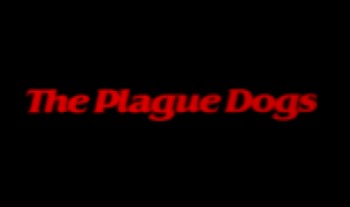 - I’ve been watching some older animated features lately. Plague Dogs, I thought, deserved another chance, so I rented the DVD. I was right. The film is a very odd one.
- I’ve been watching some older animated features lately. Plague Dogs, I thought, deserved another chance, so I rented the DVD. I was right. The film is a very odd one.
Surprisingly, despite the depressing subject, I found myself unattached to the story’s emotions. I would guess it has to do with the direction of he work.
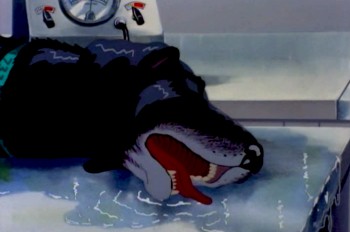
The film starts with one of our two lead characters
in deep trouble in the laboratory.
The story is essentially the story of two dogs who escape a laboratory that experiments on animals, and they make their way across the British countryside while teams of people search for them. One of the dogs has been inflicted with a plague bacteria and could spread the disease outside of the lab.
The story is told through a sort-of narration done in a very clever way. Disconnected human voices talking about the situation are used as voice over. We don’t often see who’s talking but we hear their voices. There are times where the voices start and we join the speakers in their conversations. The two dogs communicate with each other and a fox, who helps them in their escape.
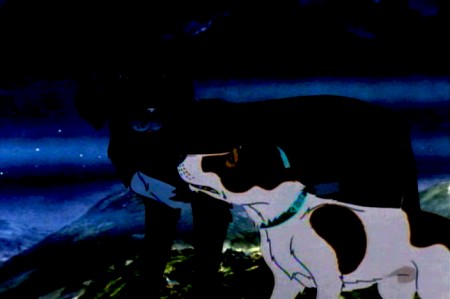
The dogs escape and travel the back roads in the mountains.
The animation throughout is just about serviceable. No scenes really shine even though there are a couple of standout names in the credits – including Brad Bird, Tony Guy and Retta Scott – as animators.
The film was a follow-up project for producer/director, Martin Rosen. He was the original producer of Watership Down, and his ego allowed him to think he could direct that film better than John Hubley, who was fired within the first six months.
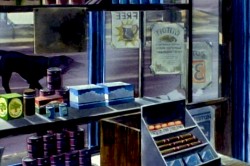
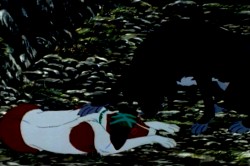
There’s the constant play between the traveling dogs
and the humans who talk about their roaming the countryside.
It’s no surprise that Plague Dogs includes no poetic scenes such as the introduction and the “Bright Eyes” sequences of Watership Down. It’s all down and heavy, done with a lack of grace. Yet, despite this there are several very clever devices for keeping the story moving forward. It would have been nice to see what better animation and a better director might have brought to it.
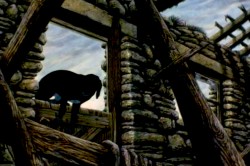
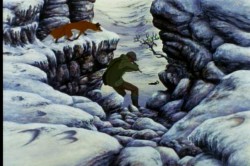
However, the film’s tough subject matter was sure to bring back poor business, and there’s no surprise in its low grosses at the box office. However, as I’ve said, the film deserves another look.
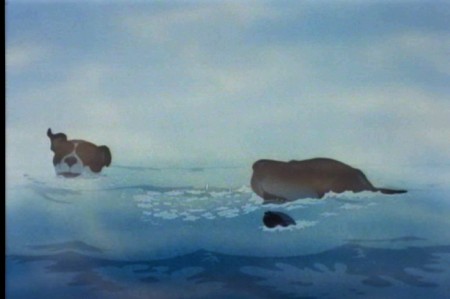
The film gasps for air with the heavy approach, though it deserves
praise for trying to be different and take animation seriously.
I can remember being in England, mixing the voice track of Tim Curry for that film. The recording engineer talked about having to sit through Plague Dogs so many times while mixing it, and explaining how the film had to fail at the box office. He talked in similar terms about When the Wind Blows which, at the least, had Raymond Briggs and David Bowie behind it. Not quite such a miserable failure as Plague Dogs, it still didn’t do well.
I’d always thought that “Doctor Rat” by William Kotzwinkle would have made a better animals-escape-lab story. It’s certainly a better read.
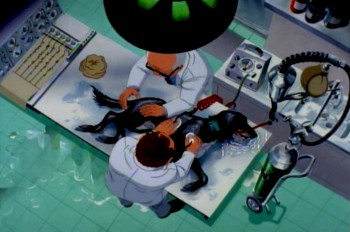
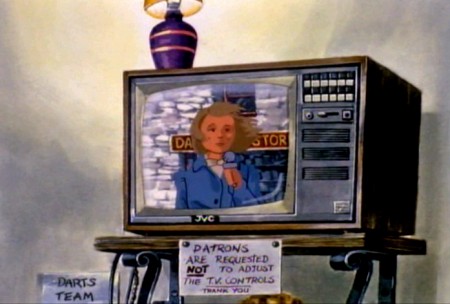
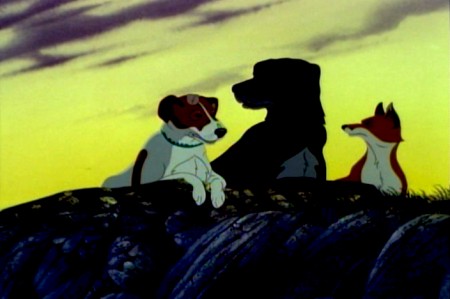
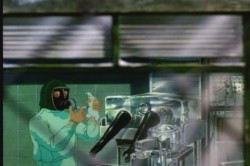
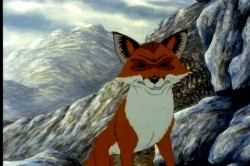

on 02 Sep 2013 at 12:34 pm 1.Martin said …
I recall the director constantly stating he didn’t want “Disney” style animation (whatever that meant!). Even when the animators pointed out the fact that REAL dogs exhibit an enormous range of expression and emotion, the director claimed he didn’t want any of it–it was too “Disney.” The film is dreadful.
on 02 Sep 2013 at 1:43 pm 2.Nat said …
I wouldn’t say the film is dreadful. It’s flawed, yes, but also a bit ambitious. By stating he didn’t want ‘Disney’ style animation, I always assumed the director meant that he didn’t want the film to seem cute or end happily. Disney has a track record of adapting more serious works and making them family friendly. While not a bad thing, it’s nice to see a film like Plague Dogs that aims beyond the childern crowd, even if it’s a bit unorthodox.
on 02 Sep 2013 at 2:13 pm 3.Floyd Norman said …
The film was ambitious, I’ll give it that. However, by “not wanting Disney” the director failed to realize his characters had no appeal. That’s box office poison, a lesson I learned from the “old man,” himself.
on 03 Sep 2013 at 3:22 am 4.Robert Forman said …
Its been a long time since I’ve seen the film, but when I did see it it was in its first run and I had already read the book. I was shocked that the film had an unhappy ending with the dogs presumably dying. The book had a happy ending and I thought that this must be a first, an animated film that changes the original story’s happy ending to a sad one. What I found out later was that the first edition of the book had the same ending as the film, but later editions had the more upbeat ending tacked on. Actually, I think the addition of the happy ending made for a better story. Without it the story is pretty relentlessly depressing. I wonder if the film would have done better with the happy ending.
Also, I don’t remember the details of the movie all that well, but in the book the dogs had no contact with the plague. It is a tabloid newspaper reporter who starts a panic by publishing stories suggesting they might be plague carriers because the fact that the lab they escaped from was doing plague research. That bit of irony would be lost if one of the dogs actually had plague.
on 03 Sep 2013 at 11:23 am 5.Tom Minton said …
William Kotzwinkle wrote some fine short stories during the 1970s. It would be interesting to see any of his stuff animated well.
on 03 Sep 2013 at 10:19 pm 6.Shane (Fighting Seraph) said …
This is the kind of honesty that I appreciate the most. While I haven’t seen the film; this type of analysis is sorely needed these days. It seems that Rosen was ignorant about animation direction when compared with John Hubley.
on 03 Sep 2013 at 11:26 pm 7.Martin said …
“I always assumed the director meant that he didn’t want the film to seem cute or end happily.”
Not in this cade. the director was very specific about not wanting the characters/animation to emote much, unlike REAL dogs–which are highly emotive, and nothing like Disney dogs (save the best parts of Lady and the Tramp). This “non-direction” proceeded to bore the animators, which turned up on screen And the film were truly ambitious, it would have staked out an audience, something it never even attempted.